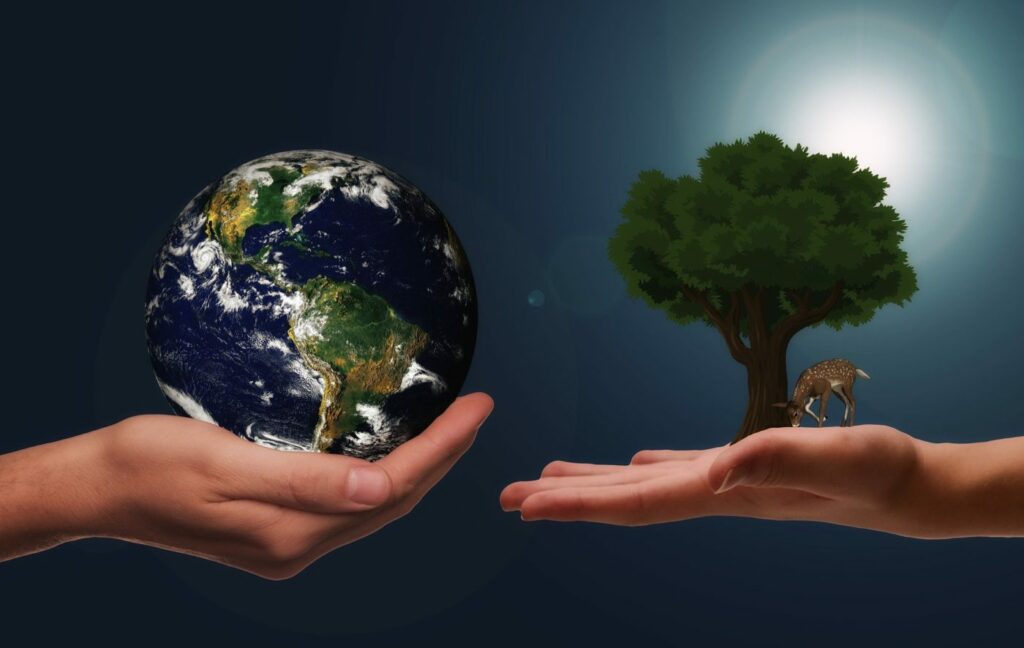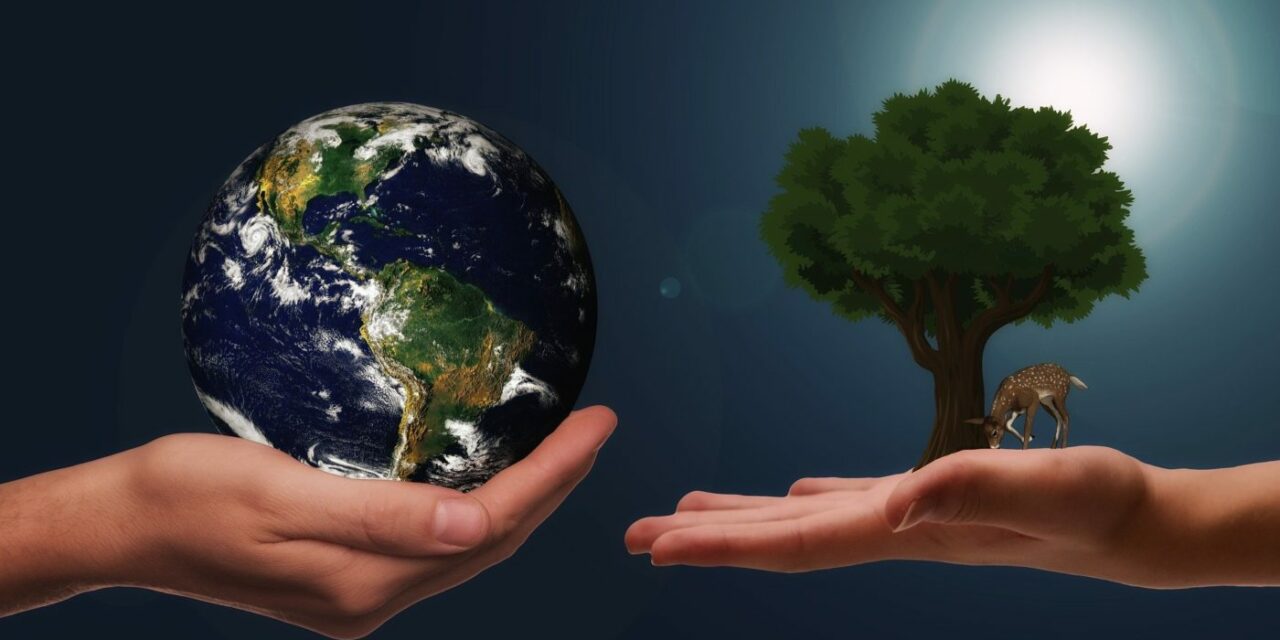
Pic Courtesy – www.zestsay.com
The 7.8 magnitude earthquake that struck Turkiye and Syria on February 6, has already claimed more than 25000 lives. In recent times, severe quakes in Bhuj 2001, Kashmir 2005, and Nepal 2015 have also taken away precious human lives and left massive trails of destruction. In this series a little earlier, the severest earthquake occurred in Chile in 1960. It had a magnitude of 9.5, which means it was 50 times stronger than the 7.8 magnitude quake in Turkiye. In all these unfortunate events, there had been a massive loss of life in addition to widespread devastation. When we see the pictures in the news channels, it becomes very difficult to believe that death can be so painful and grief can be so hard. And yet it is one of the most universal experiences of being human. It reminds us of the fragility and vulnerability of life on Earth. Let’s try to know more about the Earth.
________________________________________________________________________
Read Also : Immune System and its link with Eating Healthy and Organic Food
________________________________________________________________________
Knowing about Earth is beyond our imagination. Around 13.8 billion years ago, the building blocks of our universe suppressed themselves into an unbelievably hot and dense blob/point. We can call it a singularity in space. A teaspoonful of this, the scientists estimate the weight of some 50000 trillion, trillion, trillion tonnes. In the Big Bang, just a fraction of a second after compressing itself, the blob expanded with phenomenal force. It hurled a superheated wave of neutrons, protons, electrons, and other atomic particles across 530 trillion kilometers of space. Within three minutes, all of the hydrogen atoms and molecules in existence today including those in our body came into being. The fingerprint of this rapid expansion can still be detected today. The Earth is a mere speck in this universe, estimated to measure at least 28 billion light-years across. One light year is equal to 9.5 trillion kilometers.
Now if we slice open the Earth, we will find at the center is an iron ball 2400 km in diameter. It is nearly as hot as Sun. It remains solid because it’s under tremendous pressure. The inner core is wrapped in three shells. The first shell is the outer core ocean of liquid iron which is 2300 km thick. Surrounding this is a 2900 km thick mantle layer of hot pressurized rock. It contains 84% of the earth’s weight and mass. Covering the mantle is a thin brittle crust having all the mountains, valleys, planes, riverbeds, and seabeds. We can divide this Earth’s surface into eight major plates, generally called tectonic plates. The largest plate measures around 103 million square km. The smallest plate is the Juan Fica plate, located off the northwestern coast of the US and the southwestern coast of Canada, measuring around 2,52,000 square km.
_______________________________________________________________________
Read Also : Climate Change: Causes & Effects | Everything You Need to Know
_______________________________________________________________________
Throughout Earth’s history, it has seen all manners of cataclysms. Disparate doomsdays from supernova blasts and asteroid strike to huge volcanic eruptions. Sudden climatic shifts converting from hurricanes to tsunamis have killed countless life forms. And at times, those mass extinctions have even eliminated most species on the planet Earth. We may or may not have faced it, but we know these facts through the records of history. But despite all these natural calamities, life has always bounced back. It has a rare trait of resilience. After all these phenomena new species emerged. As a consequence of these incidents, human has always come out to be more powerful. The cycle of life repeats.
But does this cycle deserve to be repeated? Does the human is required to be more powerful to exploit this planet earth and fellow beings? Because of his actions, the earth is getting sick and becoming lifeless. Earth is alive, only because of the different forms of life on it. It will become dead if they cease to exist. The past 50 years have seen a catastrophic decline in the planet’s ecosystem and natural environment. But we have forgotten that all this leads to only the destruction of life on Earth. Nevil Shute In his novel ‘On The Beach’, contemplates “If the world engulfed by nuclear radiations, it’s only the end of us. The world will go on just the same. Only we shall not be in it. I dare say, it will get along all right without us”. The Earth always endures. It’s only us, all the living things that inhibit the Earth for a while. All life forms are fragile and Earth is only a habitat for them. We need to understand it, otherwise, our time is fleeting fast.
_______________________________________________________________________
Read Also : Climate change impacts on water resources
________________________________________________________________________
Scientists say the earth’s only living inhabitants about 2 billion years ago were microorganisms. But when they photosynthesized, that process turned light into chemical energy. During photosynthesis, plants took in carbon dioxide and water from the air and soil. Within the plant cell, the water is oxidized. This transformed the water into oxygen and carbon dioxide into glucose. Thus the tiny organisms saturated the Earth with oxygen. The excess oxygen poisoned the atmosphere for 80 to 99.5% of the organisms that then thrived on the Earth, and that left the planet Earth almost lifeless. But different and other complex structures of life evolved taking this journey to the emergence and evolution of humans on Earth. Is it not a miracle that, oxygen was produced and adequately arranged much in advance by the nature to support life in the form of humans?
Human activity often changes or destroys the habitats that plants and animals need to survive. Because human populations are growing so fast, animals and plants are disappearing 1000 times faster than they have in the past 65 million years. Scientists say that by 2050, almost 100 species will become extinct every day. Earth is the only planet known to harbor life. Since 1990, scientists have discovered about 5000 new planets. There’s a remote possibility of the emergence of life on these planets because of harsh climatic and environmental conditions. Even if we discover life on any other planet, most would be far away from the human visit. We will have to develop technology to be on an interstellar trip for that. We must appreciate that the emergence and evolution of humans on earth is no less than a miracle. Life is fragile but very precious. It will sustain only if we take care of our Earth. To save life on earth, we must save Earth first.
Tags: #climate, #climatechange, #earth, #Earthwithoxygen, #environment, #getgreengetgrowing, #gngagritech, #greenstories, #life, #nature, #SaveLifeonEarth, #SavetheEarthfirst, #trees








That amazing decent post, Thanks for sharing this, You are beautiful appreciate your work.
Awsome blog! I am loving it!! Will come back again. I am taking your feeds also.